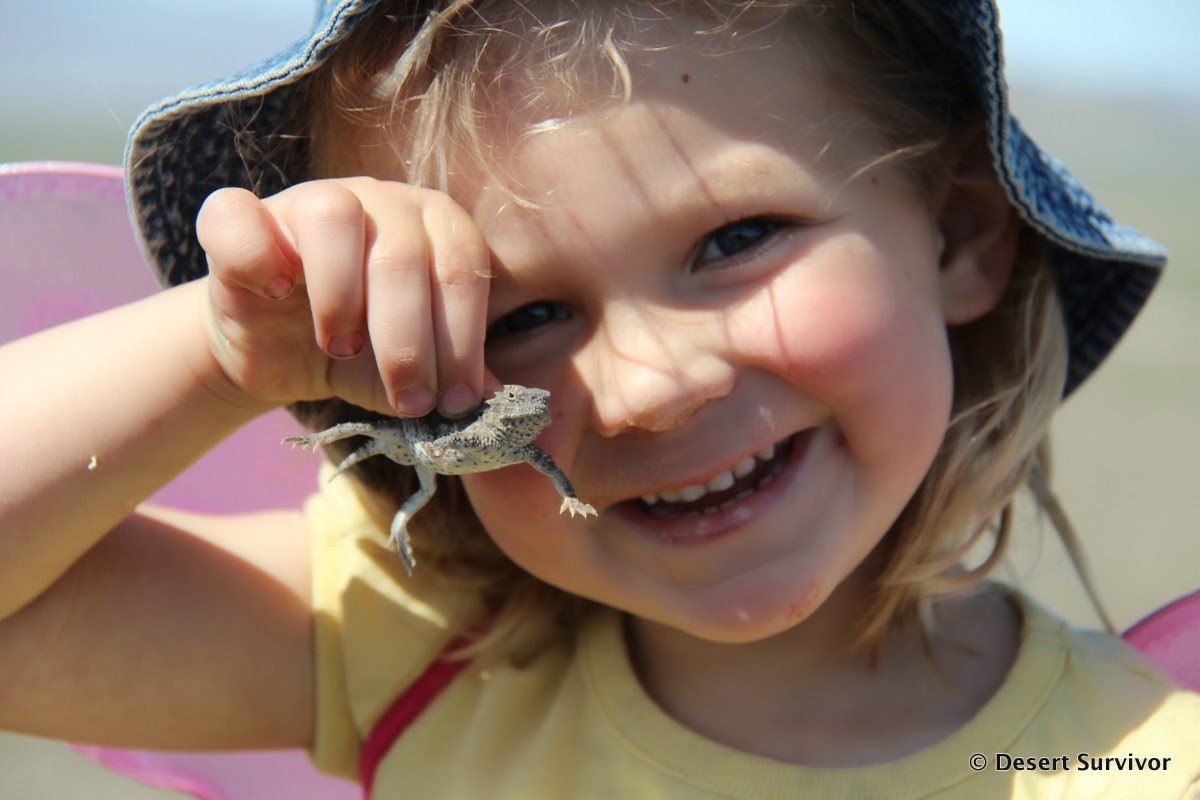The peak is remote, but since it was Easter weekend, we were expecting to share it with others. To our surprise, no one was parked at the camping areas near the road that goes by the peak.
Our goal was to climb the peak. Many years ago, my husband and I climbed it via the north face (photo above), and it was a terrifying climb. I tried another time in 2009. We knew the best way was to circle around to the south side and approach up the southwest side. Because Desert Girl had done so much hiking the previous day and my husband wants to get in shape for our Mt. Rainier trip in September, she got a free ride in the backpack.
Crystal Peak is made of Tunnel Springs Tuff, a volcanic rock that has a high quartz content in it. The rock is very white, and our eyes adjusted to the stark scenery. But then we saws burst of color.
Are you ready for it?
The Indian paintbrush was spectacular!
Our dog Henry was with us for the hike, and he followed my husband and Desert Girl on the rock, while Desert Boy and I followed the wash.
Suddenly, as I was walking along, I heard a rattle. I stopped immediately and found a rattlesnake a few feet away. I backed up, got my camera out, and took some photos. Desert Boy, who had a great opportunity to hang out with a friend herpetologist a week or so ago to go find rattlesnakes, sternly told me not to get any closer to it, not even for a photo. Smart boy.
We found our way around it and then started seeing more fossils in the Kanosh shale, a highly fossiliferous layer that is also present at nearby Fossil Mountain. I believe the fossil below is a cephalopod.
Soon we reached the ridge where the Tunnel Springs tuff met the Kanosh shale. This meant it was time for the serious climbing. But first I had to admire some of the openings in the tuff, called tafoni. Sometime when we have time to just play around, we could have a lot of fun photo opportunities!
The views were just lovely, with nary a sign of civilization. Crystal Peak is quite remote! (Oh, did I mention that already!?) We did see two vehicles the whole time we were out there, so it was actually a high traffic day.
Unfortunately our climb wasn't all peaceful and serene. Desert Girl wasn't feeling her best and complained loudly. It didn't help that the way we thought was the easiest wasn't and we had to do some backtracking down sections when it got too steep for us. This is not an easy mountain to climb.
We eventually reached a section that was too steep for Desert Girl, so she stayed with Dad and took a much-needed nap while Desert Boy and I scampered to the top. Desert Boy was so pleased that he had made it! Behind him, about 40 miles away, we could see the snow-covered peaks of the southern Snake Range, including Wheeler Peak in Great Basin National Park.

To the northwest we saw various knolls and roads across the Ferguson Desert. It wasn't so long ago (at least geologically speaking) that this was all covered with the waters of the massive Lake Bonneville.
On the way back down we found an easier way to the summit and also an easier way down to the Kanosh shale hillside. Some cairns mark the way, but they aren't always easy to spot. This Google Earth image shows the way we recommend to go up (and how we came down). It was about 1.25 miles one-way.
For even more information about Crystal Peak and the surrounding area, check out my book Great Basin National Park: A Guide to the Park and Surrounding Area!






























































